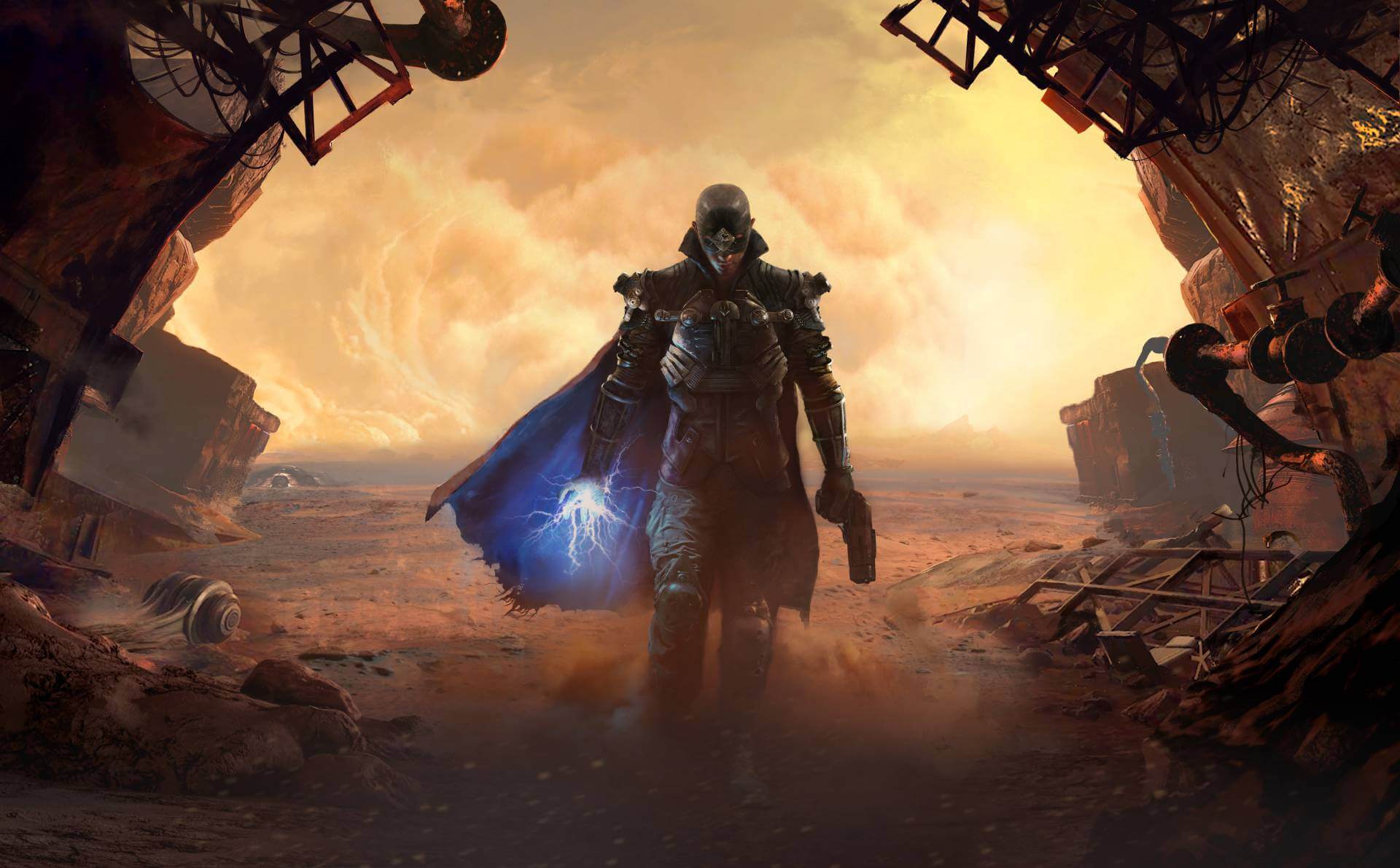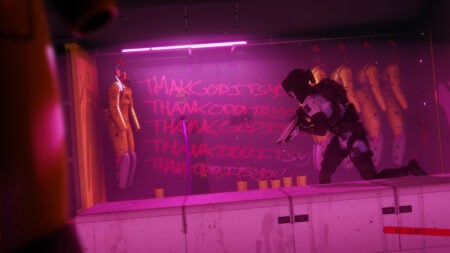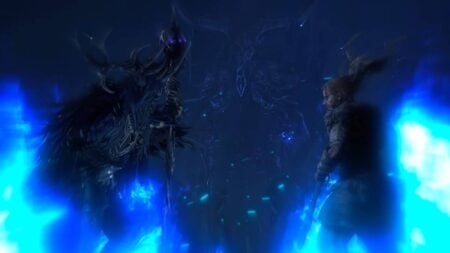Title: The Technomancer
Available on:
Developer: Spiders
Publisher: Focus Home Interactive
Genre:Action RPG
Official Site: thetechnomancer-game.com
Release Date: June 28, 2016
Where to Buy: Retail,
Mars is dying. Corporate owned cities are at war with the red planet’s rarest resource; Water. Those who bake too long in the sun undergo terrible mutations, but these mutants are treated as slaves and forced to work for the humans who dwell in the massive centers of civilization. Above everyone, lies the Technomancers.
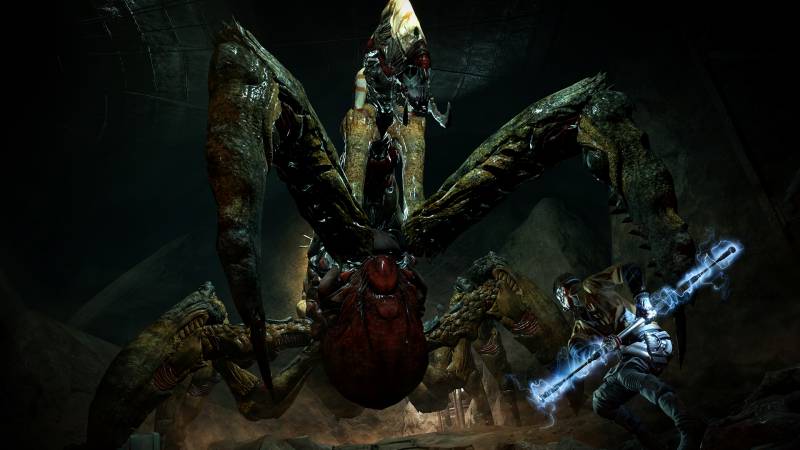
This elite group harnesses the power of electricity and guard the secrets of Mars as they try to reestablish contact with Earth.
This all has the makings of a great game, but lackluster visuals, tedious combat, boring characters and a weak narrative keep it from living up to the promise of its premise. You step into the shoes of Zachariah Mancer, a newly graduated Technomancer living in the city of Abundance. You have three unique stances at your disposal to use alongside your powers of technomancy. The warrior stance uses a staff and acrobatic leaps and bounds to whirl across the battlefield, wildly swinging your staff and dispatching enemies. The Rogue stance utilizes a combination of knife and gun. Your dodge has less range, but the speed of your blade and the range of the pistol make up for it. Finally, the Guardian stance grants players a hefty mace and a sturdy shield.
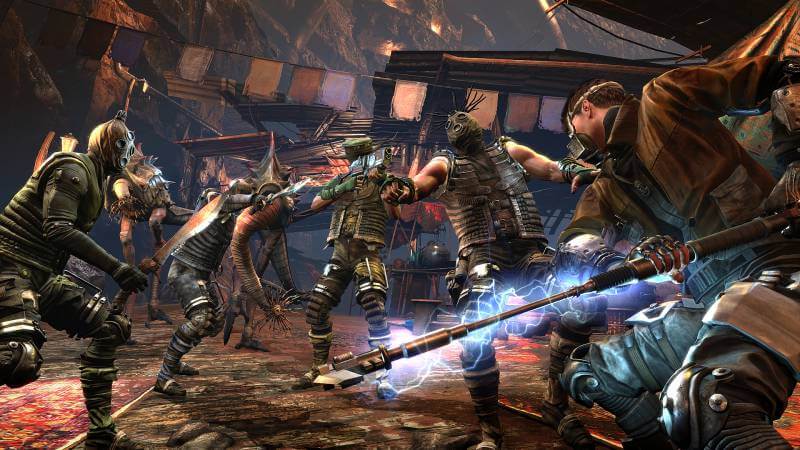
The fourth pillar of your arsenal is your Technomancer powers. These electrical abilities have varying uses, from electrifying your weapon for extra damage, to hurling streams of electricity from your fingertips. They can be used in any stance and can help turn the tide in a brawl. Once these basics are introduced to you the game ships you out into the first location. Here the game’s flaws begin to rear their head.
While the world itself is interesting and it’s fun to learn about the checkered past of mars and how it has led to the seemingly dystopian societies that cover its surface, the games look doesn’t make these areas fun to explore.
The graphics are not impressive, covered in muddy textures and draped in varying shades of brown. Don’t get me wrong; the design of some of the game’s main areas is great. The city of Ophir is covered in a metallic sheen, with grand halls rising above the thin city streets. Metal trees line the paths, giving you a sense that this is one of the last remaining bastions of humanity on the war-torn red giant. The merchant bazaar of Noctis, on the other hand, offers up a much different aesthetic. The ornate columns that hold up the palace and the flaps of the tents that ripple in the wind create a much more humble atmosphere than that of Ophir. Occasional vistas shine through, hinting at what the game could have been, but it still falls flat.
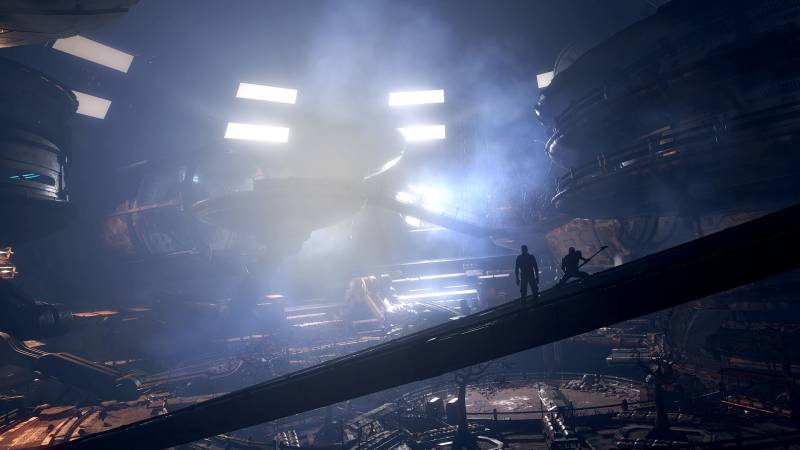
Some of the enemy design shines through, though, giving you a glimpse at what the game could have been. The horribly grotesque creatures that wander beneath the irradiated sun of Mars are both familiar and alien, giving players a sense of the vague ties to humanity that Mars still has.
You’ll spend most of your time in The Technomancer trudging through the main areas, but when you travel to an area that is unique to a mission, they all fall flat. You’ll travel down winding corridors lined by red rocks and brown walls. There is little to no environmental diversity, which makes arriving in a new area much less monumental than it should be.
The cities are filled with winding corridors and multiple exits that crisscross in confusing ways. Holding the right trigger while not in combat to bring up a map overlay helps traversal, but the game doesn’t outline these features. The first six to eight hours of the game are spent trudging around the city of Ophir, taking on missions that send you scrambling through the dark and dangerous slums and the mutant infested underworks. It seems rather straightforward but the majority of my time was spent figuring out where to go.
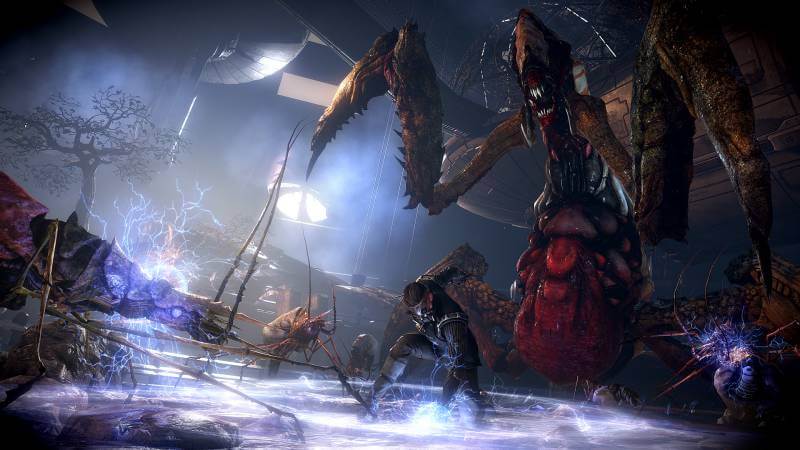
The storyline doesn’t spice up proceedings any better. Once the initial setup is done, the narrative doesn’t move forward for six to eight hours, which covers the entire first area of the game. This time is spent meeting characters and building up your party, but the characters come off as one-dimensional, spouting lines of rhetoric that are more flashy than substantive.
In a world that is under so much political and moral duress, the conversation and karma system seemed like it could add some much-needed depth, but this too disappointed. There are choices to make in dialogue, but most of this is used to pick a characters mind about the world. When choices that actually affect how people in the world perceive you arise, they also fall flat.
Not only is the writing bad, the voice acting is laughable at times. Very few characters come off as genuine, which makes it hard to care about any of them. The few that are believable enough to cross the line to likable just barely make the grade.
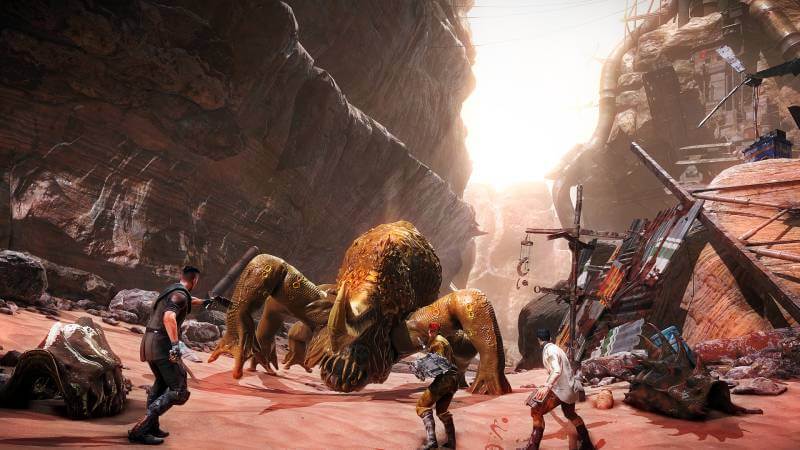
Zachariah Mancer has some seriously poor people skills. One minute the game let me choose to help an injured mutant, the next I was berating one as a slave and beating it into submission. When even the main character isn’t likable, it’s difficult to invest yourself in the experience.
Karma also extends to combat. After each bout, you can choose to either loot a corpse and leave it, or drain its serum – the games currency. Draining an enemy will decrease your karma but make your wallet heavier. It’s a very black or white choice and one that doesn’t seem to have much weight at all.
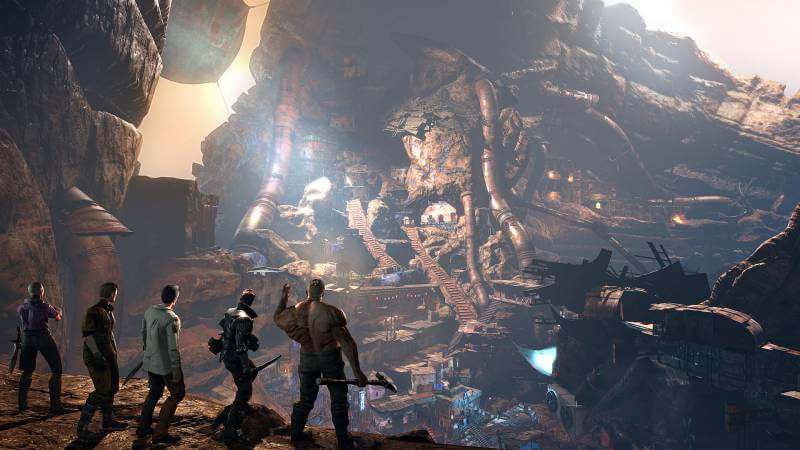
Combat seemed to be the games saving grace at first, but even this quickly became untrue. Each stance has three main attacks: a standard, a secondary, and a special. You can swap between the stances on the fly, meaning your play style can change depending on the situation. But the combat is not deep enough to require switching or any advanced tactics.
Once I figured out that all I had to do was mash the dodge button wildly and then swoop in with a staff special attack, combat became laughably easy. And if I didn’t do this, the AI would immediately converge on me, taking away all of my health in a matter of seconds. I had two AI comrades that followed me into battle, but no matter what I did they always ended up dying to even the simplest of foes.
You need to keep moving in order to live, but even then sometimes the AI lands a hit and takes away all of your health. Combat in the Technomancer comes in two flavors: boring and frustrating. Which is not good for a game whose central hook is fast paced and varied combat.

Even against the hideously disfigured bosses are more of a nuance than a challenge. Their attacks are sometimes impossible to dodge, making cheap tactics the only way to emerge victoriously.
Leveling up was a fast and simple process, but gaining new abilities didn’t change the gameplay in any meaningful way. I funneled all of my points into the warrior and technomancy trees, but other than making me slightly stronger there was no discernible difference.
The Technomancer has good ideas, but they all fall flat. Even the tantalizing world can’t save this subpar adventure. The combat and world seem strong enough to rescue the game from the uninteresting characters with poorly written and voiced dialogue, but they too reveal how thin they are. The Technomancer takes a lot of queues from the Mass Effect and Dragon Age series’, but can’t live up to those stellar series in any way whatsoever.
[embedyt] https://www.youtube.com/watch?v=YC48OihtNp4[/embedyt]
- Gameplay: Combat is boring, bordering on frustrating, with choices having little to no consequence.
- Graphics: Design is occasionally interesting, but the drab color palette and some uninspired designed mar the experience.
- Sound: Soundtrack is nothing special, adding very little to the game overall.
- Presentation: Writing and voice acting is mediocre across the board.
[review]

